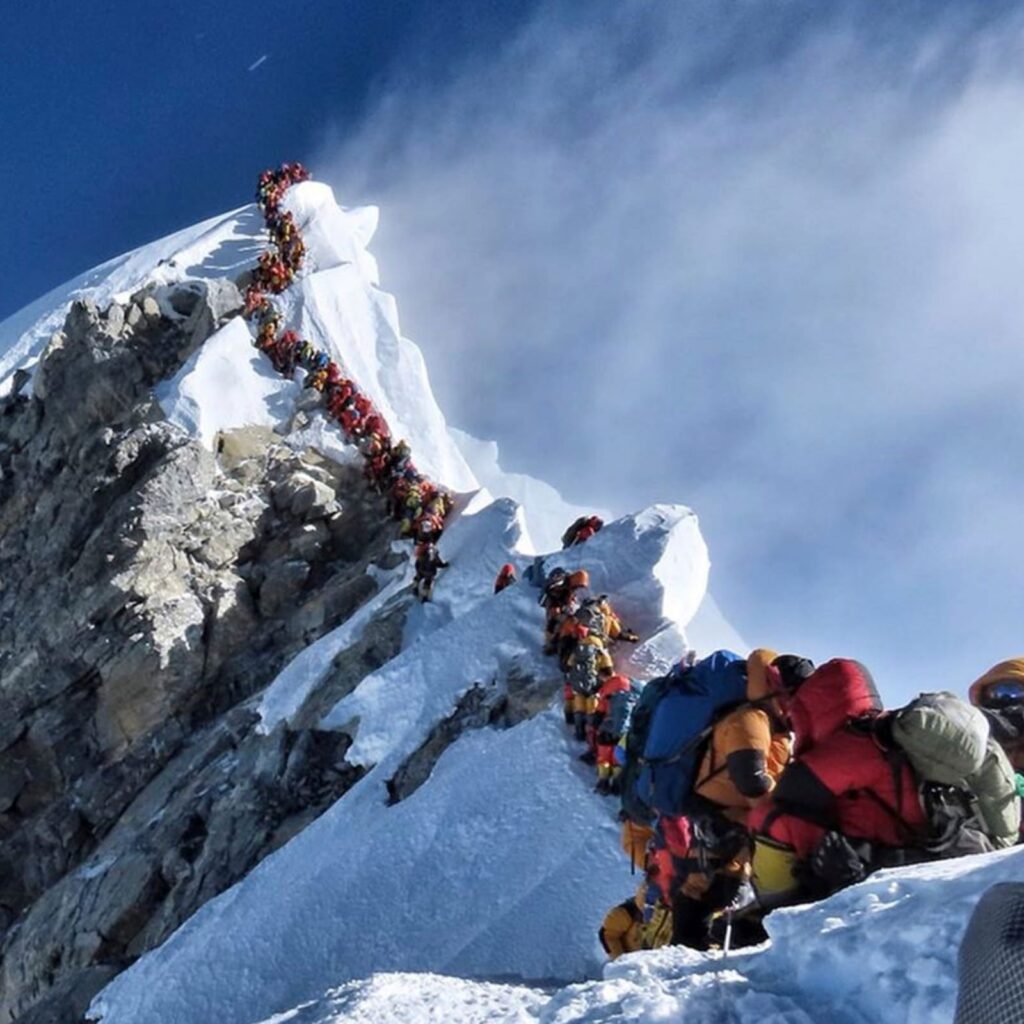
In 2025, the use of performance-enhancing substances, such as Xenon gas, to drastically shorten Everest expeditions has reignited ethical debates. Critics highlight issues of Sherpa exploitation, environmental harm, and cultural insensitivity, prompting calls for tighter regulations and better benefit-sharing with local communities.
Rapid Ascents Spark Controversy
May 2025 saw renewed global attention on the ethics of Everest climbing after reports emerged of mountaineers summiting and descending the peak in under a week, far quicker than the typical 6–9 week expedition. These accelerated climbs, aided by unconventional methods such as the use of Xenon gas, have raised both legal and moral concerns.
A group of British climbers drew backlash after reportedly using Xenon, a gas known for its anesthetic properties and potential to boost red blood cell production by stimulating erythropoietin, enhancing oxygen capacity at high altitudes. Himal Gautam, Director of Nepal’s Department of Tourism, condemned the method as violating climbing ethics and initiated a formal inquiry into its use.
Meanwhile, Ukrainian businessman Andrew Ushakov became another flashpoint after claiming to summit Everest within four days of departing New York. He was briefly jailed in Kathmandu for allegedly carrying undeclared foreign currency.
Mountaineering Ethics and Sherpa Exploitation
Since the 1990s, when Everest became increasingly accessible to commercial climbers, concerns about the exploitation of Sherpa guides have intensified. Sherpas are often tasked with the most hazardous duties — fixing ropes, carrying heavy loads, and setting up camps — while receiving a fraction of the recognition or compensation.
In 2025, over 400 climbing permits were issued for Everest, further emphasizing the growing commercialization. Critics argue that the once-personal connection between climbers and their Sherpa guides is fading, reduced to a transactional interaction as expeditions become more industrialized.
Environmental and Cultural Impact
Environmental degradation is another urgent concern. The sacred status of Everest and other Himalayan peaks in Buddhist belief systems stands in stark contrast to the litter, waste, and overcrowding seen on popular climbing routes. While drones have been proposed for waste management, local communities insist the issue transcends physical debris — it includes a deeper disrespect for sacred landscapes.
The debate also extends to Mount Kanchenjunga, where climbers reportedly reached the summit on 18 May 2025, despite a longstanding ban. Located on the Nepal-India border, Kanchenjunga is considered sacred by the people of Sikkim, and climbing to its peak has been officially prohibited since 2000.
Calls for Reform
The growing list of concerns — from unethical climbing practices and Sherpa safety to environmental destruction and cultural disregard — is fueling demands for reform. Suggestions include increasing expedition fees to curb overcrowding and ensure better compensation and benefits for local communities involved in mountaineering support roles.
As Everest continues to symbolize the ultimate test of human endurance, the question remains: at what ethical and cultural cost?
